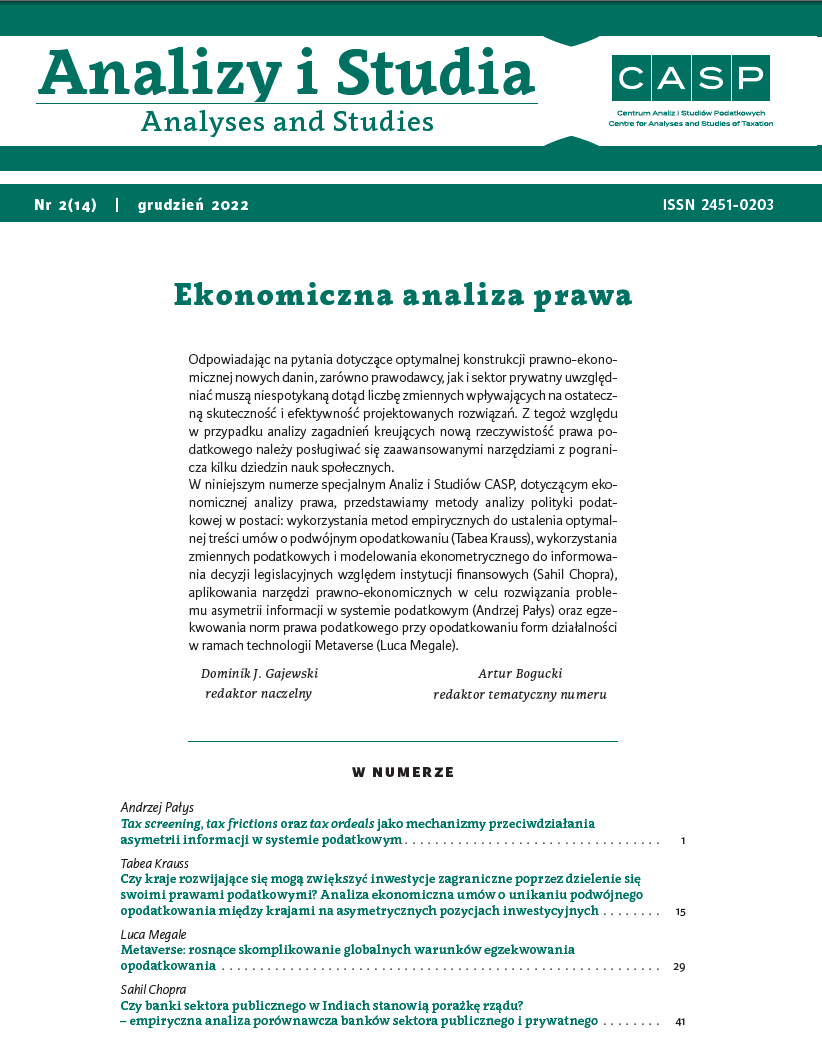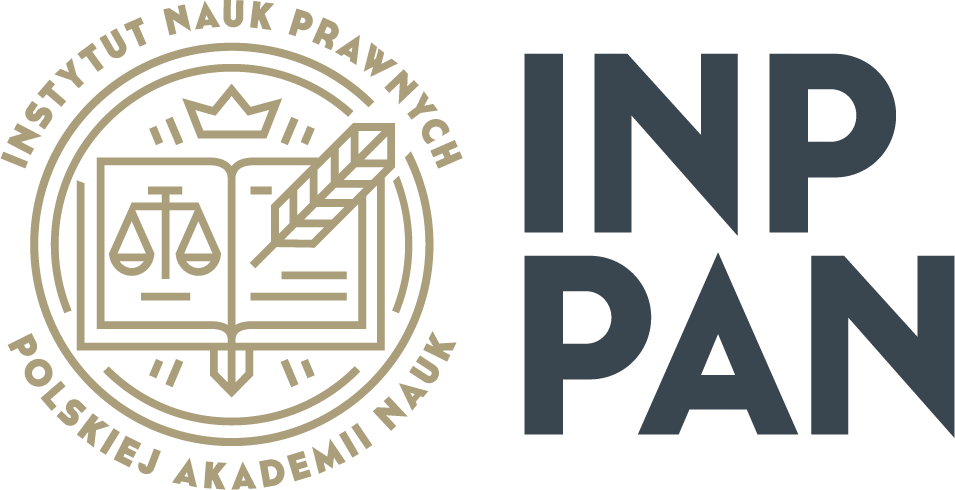Are Public Sector Banks in India a Government Failure? A Comparative Empirical Analysis of Public Sector and Private Sector Banks
DOI:
https://doi.org/10.33119/ASCASP.2022.2.4Keywords:
government failure, empirical analysis, public sector banks, panel data, pooled OLS modelAbstract
This paper seeks to examine the relation between banks’ profitability and ownership in India. The justification to measure the impact of ownership comes from the theory of government failure. An independently constructed dataset containing all commercial public and private sector banks in India as of April 2020 is used. The data ranges from 2004 to 2020. Banks’ characteristics are collected from respective banks’ websites, and the hypotheses are tested by estimating an econometric model, i.e., the pooled OLS model. In conclusion, the government owned banks’ performance is inferior compared to private banks. This can be accredited to the huge amount of loans sanctioned in priority sectors and fraudulent cases due to the presence of interest groups, corruption, and inefficiency of employees in public sectors.
References
Andrew, B. (2008). Public administration and development, www.interscience.wiley.com
Arrawatia, R., Dawar, V., Maitra, D., & Dash, S.R. (2019). Asset quality determinants of Indian banks: Empirical evidence and policy issues. Public Affairs.
Bator, F.M. (1958). The Anatomy of Market Failure. The Quarterly Journal of Economics, 351–379.
Chaudhary, K., & Sharma, M. (2011). Performance of Indian Public Sector Banks and Private Sector Banks: A Comparative Study. International Journal of Innovation, Management and Technology, 249–256.
Cinelli, C., Forney, A., & Pearl, J. (2021). SSRN, https://papers.ssrn.com/sol3/papers.cfm?abstract_id=3689437
Coase, R.H. (1960). The Problem of Social Cost. The Journal of Law & Economics, 1–44.
Cooter, R,. & Ulen, T, (2012). Law & Economics. Pearson Education, Inc.
Doan, T.-T.T., & Bui, T.N. (2020). An empirical analysis of macroeconomic and bank-specific factors affecting profitability of Vietnam banks. Accounting, 1059-1064.
Dolfsma, W. (2011). Government Failure — Four Types. Journal of Economic Issues, 593–604.
Epstein, L., & Martin, A.D. (2014). An Introduction to Empirical Legal Research. Oxford: Oxford University Press.
Fike, R., & Gwartney, J. (2015). Public Choice, Market Failure, and Governement Failure in Principles Textbooks. The Journal of Economic Education, 207–218.
Furton, G., & Martin, A. (2019). Beyond market failure and government failure. Public Choice, 197–216.
Gabriela, G. (2013). Government Failures in Regulating Markets. “Ovidius” University Annals, Economic Sciences Series, 299–304.
Garg, N. (2019). Decoding the Great Indian Recapitalisation Plan: Restoring the Health of Public Sector Banks in India. South Asian Survey, 28–54.
Gauba, R. (2012). The Indian Banking Industry : Evolution, Transformation & The Road Ahead. Pacific Business Review International.
Gaur, D., & Mohapatra, D.R. (2019). Research Gate, https://www.researchgate.net/publication/341071819
Gaur, D., Mohapatra, D.R., & Jena, P.R. (2020). Asset Quality of Indian Banking Sector and the Role of Government Directed Credit Schemes. Journal of Critical Reviews.
Helm, D. (2010). Government failure, rent-seeking, and capture: the design of climate change policy. Oxford Review of Economic Policy, 182–196.
Hiestand, T. (2005). Using Pooled Model, Random Model and Fixed Model Multiple Regression to Measure Foreign Direct Investment in Taiwan. International Business & Economics Research Journal.
Siva Reddy Kalluru, & Sham Bhat K (2008). An Empirical Analysis of Profitability Determinants in Indian Commercial Banks During Post Reform Period. The Icfai University Journal of Industrial Economics.
Karnik, A., & Lalvani, M. (1996, March 30). Interest Groups, Subsidies and Public Goods: Farm Lobby in Indian Agriculture. Economic and Political Weekly.
Kaur, H.V. (2010). Analysis of Banks in India—A CAMEL Approach. Global Business Review, 257–280
Kumar, S., & Sreeramulu, M. (2007). Employees’ Productivity and Cost – A Comparative Study of Banks in India During 1997 to 2008. Reserve Bank of India Occasional Papers, Winter.
Kumbhakar, S.C., & Sarkar, S. (2004). Deregulation, Ownership, and Efficiency Change in Indian Banking: An Application of Stochastic Frontier Analysis, http://www.igidr.ac.in/conf/finwrk/workshop.pdf
Mathur, K B.L. (2002, June 8). Public Sector Banks in India: Should They Be Privatised?. Economic and Political Weekly.
Micco, A., Panizza, U., & Yan ̃ez, M. (2007). Bank ownership and performance. Does politics matter? Science-Direct Journal of Banking & Finance, 219–241.
Mishra, A.K. (2016). An Analysis of NPAs in Priority and Non-Priority Sectors with respect to Public Sector Banks in India. IOSR Journal of Business and Management.
Pindyck, R.S., & Rubinfeld, D.L. (2013). Microeconomics (8th Edition). s.l.:Pearson Education, Inc.
Porta, R.L., Lopez-de-Silanes, F., & Shleifer, A. (2000). Government Ownership of Banks, http://www.nber.org/papers/w7620
RBI (2021). Reserve Bank of India, https://www.rbi.org.in/ Roman, A., & Dănuleţiu, A.E. (2013). An Empirical Analysis of the Determinants of Bank Profitability in Romania. Annales Universitatis Apulensis Series Oeconomica, 580–593.
Seemule, M., Sinha, N., & Ndlovu, T. (2017). Determinants of Commercial Banks’ Profitability in Botswana: An Empirical Analysis. The IUP Journal of Bank Management.
Sehrawat, M. & Giri, A., 2016. Financial development and poverty reduction in India: an empirical investigation. International Journal of Social Economics, pp. 106–122.
Sengupta, R., & Vardhan, H. (2019). IdeasforIndia, https://www.ideasforindia.in/topics/money-finance/how-banking-crisis-is-impeding-india-s-economy.html
Shabbir, N., & Mujoo, R. (2014). Problem of Non Performing Assets in Priority Sector Advances in India. Journal of Economics and Development Studies.
Singh, C. (2016). An Essay on Banking and Macroeconomics. Working Paper No. 530.
Singh, C. et al. (2016). Frauds in the Indian Banking Industry. Working Paper No. 505.
Sitharaman, N. (2021). indiabudget, https://www.indiabudget. gov.in
Slaev, A.D. (2017). Coasean versus Pigovian solutions to the problem of social cost: the role of common entitlements. International Journal of the Commons, 950–968.
Stiglitz, J. (1998, March). Redefining the role of the state [Interview].
The Banking Regulation Act, 1. (2017). rbidocs, https://rbidocs.rbi.org.in/rdocs/Publications/PDFs/BANKI15122014.PDF
UKEssays (2018). UKEssays, https://www.ukessays.com/essays/economics/difference-between-coasean-andpigouvian-solution-to-an-environmental-problemeconomics-essay.php?vref=1
Voigt, S. (2020). Constitutional Economics A Primer. Hamburg: Cambridge University Press.
Walker, H.M. (1940). Degrees of freedom. Journal of Educational Psychology, 253–269.
Winston, C. (2000). Government Failure in Urban Transportation. Fiscal Studies, 403–425.
Yeyati, E.L., Micco, A., Panizza, U. (2004). Should the Governemnt be in the banking business? The Role of State-Owned and Development Banks. Working Paper, No. 517, Inter-American Development Bank, Research Department, 5–47.
Downloads
Published
How to Cite
Issue
Section
License
Authors retain copyright and grant the journal right of first publication with the work simultaneously licensed under a Creative Commons Attribution License that allows others to share the work with an acknowledgement of the work's authorship and initial publication in this journal. All authors agree for publishing their email adresses, affiliations and short bio statements with their articles during the submission process.
Author agrees to share his work under CC-BY-NC license.


























